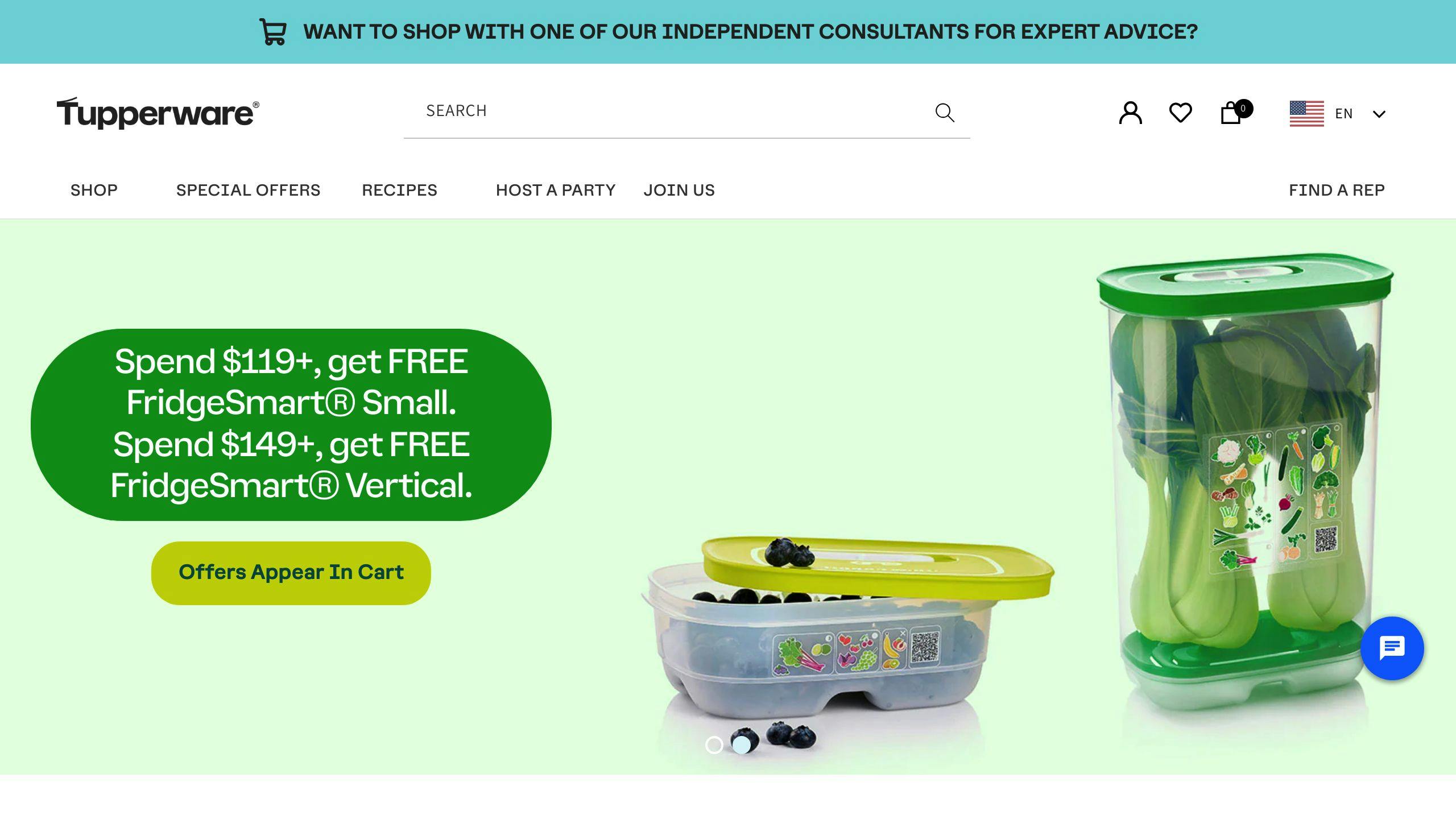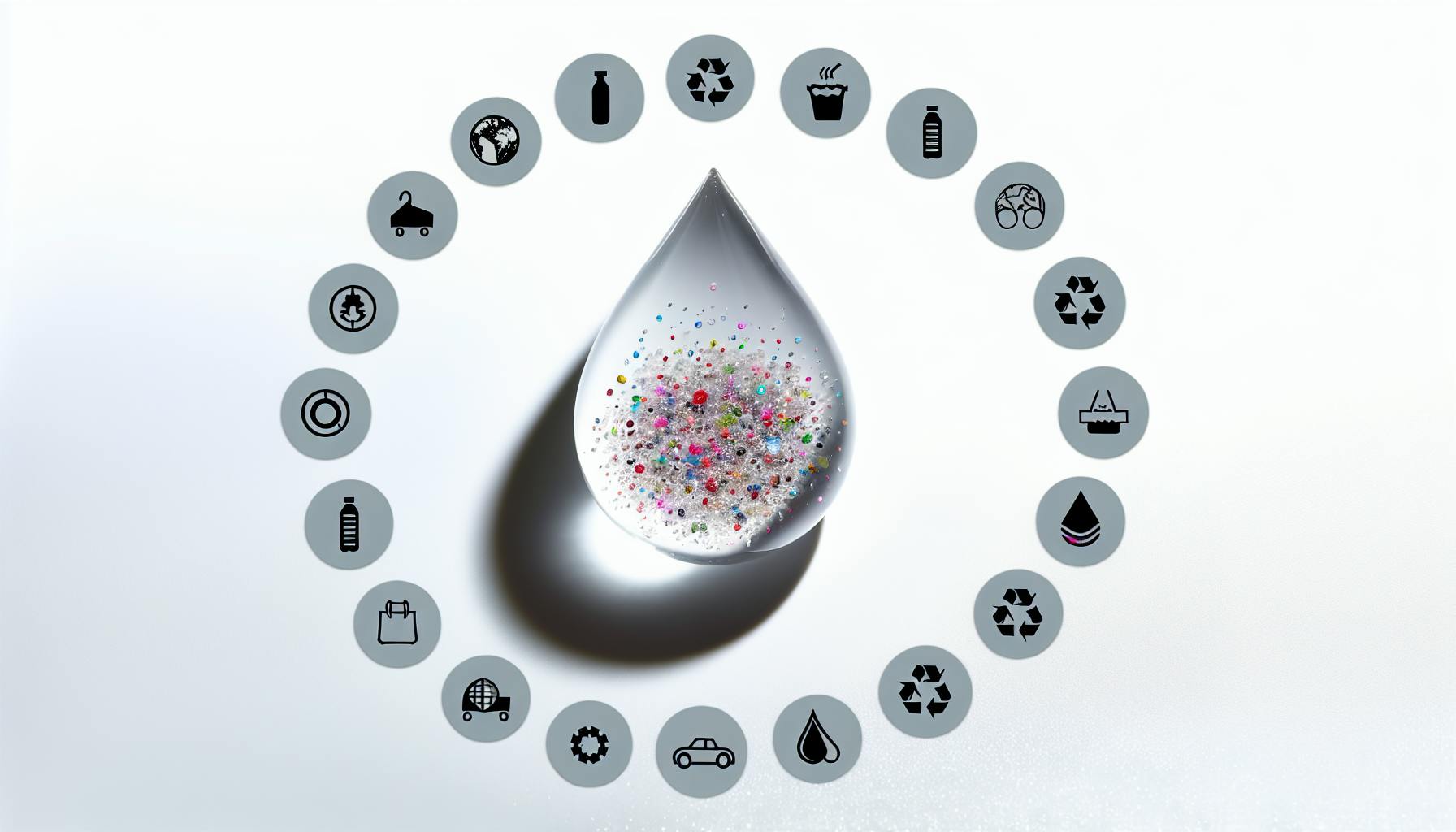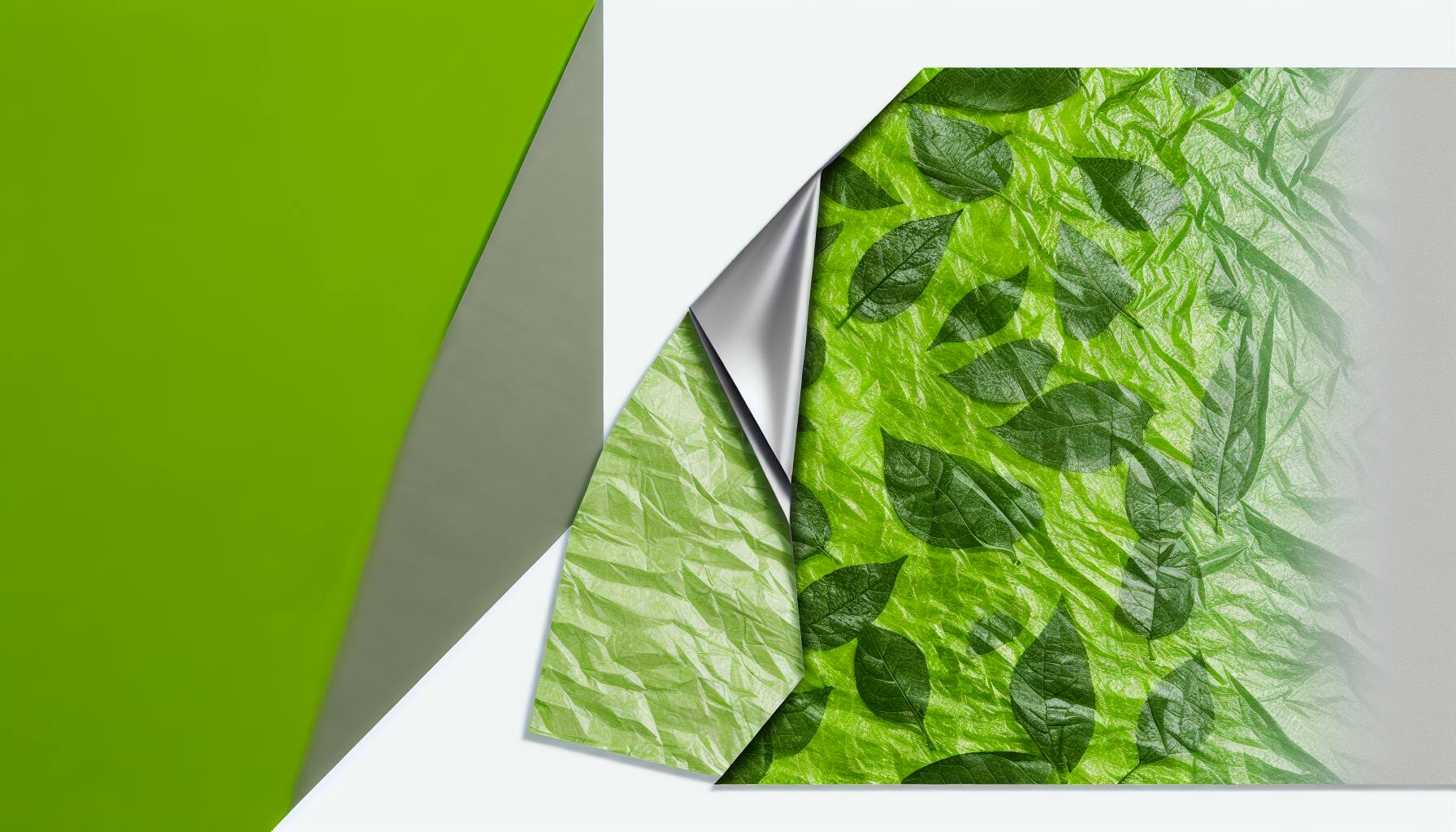Tupperware and other plastic food containers can release microplastics, especially when exposed to heat or wear and tear. Here's what you need to know:
- Microplastics are tiny plastic particles smaller than 5mm
- Plastic containers release millions of microplastics when microwaved
- Long-term storage in plastic also leads to microplastic release
- Microplastics may pose health risks, including cell damage and hormone disruption
- Safer alternatives: glass, stainless steel, ceramic, and silicone containers
To reduce your exposure to microplastics from food containers:
- Avoid heating food in plastic
- Let hot food cool before storing in plastic
- Replace damaged or old containers
- Use non-plastic alternatives when possible
- Clean and maintain containers properly
| Container Type | Risk Level | Best Use |
|---|---|---|
| Plastic pouches | Higher | Avoid for hot foods |
| Microwaveable plastic | Highest | Don't microwave |
| Glass | Low | Versatile, microwave-safe |
| Stainless steel | Low | Cold foods, not for microwave |
| Ceramic | Low | Hot or cold foods |
| Silicone | Low | Flexible storage |
By making informed choices about food storage, you can minimize your exposure to potentially harmful microplastics.
Related video from YouTube
2. How Tupperware Releases Microplastics

2.1 Causes of Microplastic Release
Plastic food containers can release tiny plastic bits in several ways:
-
Heat: Microwaving is a big problem. In just 3 minutes, it can release millions of tiny plastic pieces.
-
Wear and tear: Washing and scrubbing can cause small flakes to come off.
-
Chemical breakdown: Acidic foods or strong cleaners can break down the plastic surface.
-
Long storage: Keeping food in plastic containers for a long time, even in the fridge, can lead to plastic release.
2.2 What Studies Show
Recent research has found some worrying things about plastic food containers:
| What Was Studied | What They Found |
|---|---|
| Microwave heating | Millions of tiny plastic bits released in just 3 minutes |
| Long-term storage | Millions to billions of tiny plastics released over 6+ months in fridge or at room temperature |
| Container type | Plastic pouches release more bits than hard containers |
| Effect on cells | 3/4 of test cells died after 48 hours of exposure to high levels of these plastics |
These studies show that using plastic containers, especially for hot food or long-term storage, might not be safe. It's important to think about how we use and store our food to avoid these risks.
3. Health Effects of Microplastics
3.1 Possible Health Risks
Microplastics might harm our health in several ways:
| Risk | Description |
|---|---|
| Hormone Issues | Chemicals in plastic can mess with hormones like estrogen and testosterone |
| Long-term Health Problems | Linked to higher risk of type 2 diabetes and heart disease |
| Toxic Build-up | Some plastics have harmful additives that can build up in the body |
| Breathing Problems | Inhaling microplastics might be bad for people with lung issues |
| Gut Health | May change the balance of good bacteria in our digestive system |
3.2 What Scientists Know So Far
Here's what research tells us about microplastics and health:
1. Found in the Body: Microplastics have been found in blood, lungs, placentas, and poop.
2. Cell Damage: Tests on human colon cells show microplastics can harm cell structures.
3. Possible DNA Impact: Some studies hint at damage to DNA, but more research is needed.
4. Size Matters: Tiny nanoplastics can get into blood and might cross important barriers in the body.
5. More Study Needed: Most research is short-term and small-scale. We don't know how much plastic is safe to consume.
| Research Findings | What It Means |
|---|---|
| Microplastics in body tissues | We're exposed to plastics in many ways |
| Effects on human cells | Plastics might damage our cells |
| Nanoplastics in blood | Very small plastics can move through the body |
| Limited long-term data | We need more research to understand long-term effects |
While we don't know everything about how microplastics affect our health, their presence in our bodies is a concern that needs more study.
4. Checking Your Tupperware
4.1 Which Containers Are Riskier
Some food containers are more likely to release tiny plastic bits than others:
| Container Type | Risk Level | Reason |
|---|---|---|
| Polyethylene food pouches | Higher | Release more plastic bits |
| Microwaveable containers | Highest | Can release millions of bits in 3 minutes |
| Long-term storage containers | High | Release plastic bits over time |
| Single-use plastic containers | High | Not made for repeated use or high heat |
4.2 Signs Your Container Might Be Unsafe
Check your containers often for these signs:
| Sign | What to Look For | What to Do |
|---|---|---|
| Damage | Cracks, chips, scratches | Replace right away |
| Surface changes | Sticky or warped areas | Throw away |
| Stains and smells | Hard-to-remove stains with odd smells | Think about replacing |
| Bad seal | Loose or poorly fitting lids | Replace to keep food safe |
| Heat damage | Warping or melting from microwave or dishwasher | Stop using and replace |
Key things to watch for:
-
Damage: Any visible harm makes the container harder to clean and more likely to release plastic bits.
-
Lid fit: Lids should close tightly to keep food fresh and clean.
-
Heat effects: Even safe-for-microwave containers wear out. Look for warping or melting from heat.
-
Age and use: Replace old containers, especially if you've heated or washed them a lot.
sbb-itb-1dc3f59
5. Ways to Reduce Microplastic Exposure
5.1 Using Plastic Containers Safely
To lower your risk when using plastic containers:
- Don't heat food in plastic
- Let hot food cool before putting it in plastic
- Wash plastic containers by hand, not in the dishwasher
- Replace damaged or old plastic containers quickly
5.2 Other Storage Options
Here are safer choices instead of plastic:
| Material | Good Points | Things to Think About |
|---|---|---|
| Glass | Safe for food, okay in microwave | Heavy, can break |
| Stainless Steel | Strong, doesn't react with food | Not for microwave use |
| Ceramic | Doesn't soak up smells | Can be heavy |
| Silicone | Bends, handles heat well | Might keep food smells |
Experts say glass is best because it's safe and works for many uses. Stainless steel, ceramic, and porcelain are also good for storing food.
5.3 Steps to Switch from Plastic
To move away from plastic food storage:
- Slowly replace plastic with safer options
- Start with containers you use most
- Buy good quality replacements that last
- Try beeswax wraps or cloth bags for dry snacks
- Use reusable bags for grocery shopping
6. Safe Food Storage Without Plastic
Learn how to use and care for non-plastic food containers to cut down on microplastics and be more eco-friendly.
6.1 How to Clean Non-Plastic Containers
Keep your non-plastic containers clean and safe:
| Container Type | Cleaning Method | Tips |
|---|---|---|
| Glass | Warm, soapy water or dishwasher | For tough stains, use baking soda and water |
| Stainless Steel | Hand wash with mild soap | Avoid scratchy cleaners |
| Ceramic | Hand wash or dishwasher | Use baking soda paste for stains |
| Silicone | Hot, soapy water or dishwasher | Soak in vinegar and water to remove smells |
6.2 Tips for Using Non-Plastic Containers
Get the most out of your non-plastic food storage:
| Aspect | Tips |
|---|---|
| Temperature | - Glass and ceramic: OK for microwave (remove metal lids) - Stainless steel: Good for cold food, not for microwave - Let hot food cool before storing |
| Storage | - Use clear glass to see what's inside - Pick stackable containers to save space - Try beeswax wraps for bread and veggies |
| On-the-go | - Light stainless steel for packed meals - Silicone bags for snacks - Insulated steel for hot or cold food |
| Upkeep | - Check often for damage - Replace worn-out lid seals - Store with lids off to avoid smells |
7. Wrap-Up
7.1 Key Points to Remember
Here are the main things to keep in mind about microplastics in food containers:
| Point | Details |
|---|---|
| Health Concerns | Microplastics might cause cell damage and carry harmful chemicals |
| Where They Come From | Food containers release microplastics, especially when heated or worn out |
| Unknown Safe Levels | We don't know how much microplastic is okay to eat |
| Play It Safe | It's best to be careful about microplastics from food containers |
7.2 Smart Food Storage Choices
To lower your contact with microplastics from food containers, try these tips:
| What to Do | Why It Helps | How to Do It |
|---|---|---|
| Use Glass or Metal | No microplastics | Switch a few containers at a time |
| Avoid Heat | Less plastic comes out | Don't microwave or put plastic in the dishwasher |
| Buy Good Containers | Last longer, less likely to break down | Pick high-quality, food-safe options |
| Take Care of Containers | Keeps them in good shape | Replace scratched or odd-colored ones |
| Use Wisely | Less plastic overall | Don't put oily foods or hot items in plastic |
FAQs
Should you throw out old Tupperware?
It's a good idea to replace old Tupperware often. Here's why:
| Reason | Explanation |
|---|---|
| Tiny plastic bits | Old containers shed more plastic into food |
| Leftover smells | Old use can leave smells that get into new food |
| Scratches | Worn spots can hold germs and let out more plastic |
| Food safety | Old containers might not close well, letting food go bad |
Think about getting new containers every few years, or sooner if you see:
- Color changes
- Strong smells
- Scratches or cracks
- Weird shapes
When you get new containers, try glass, steel, or ceramic instead of plastic. These are safer and don't let out tiny plastic bits.
| Container Type | Why It's Better |
|---|---|
| Glass | Safe for food, can see through it |
| Steel | Strong, doesn't react with food |
| Ceramic | Doesn't keep food smells |


